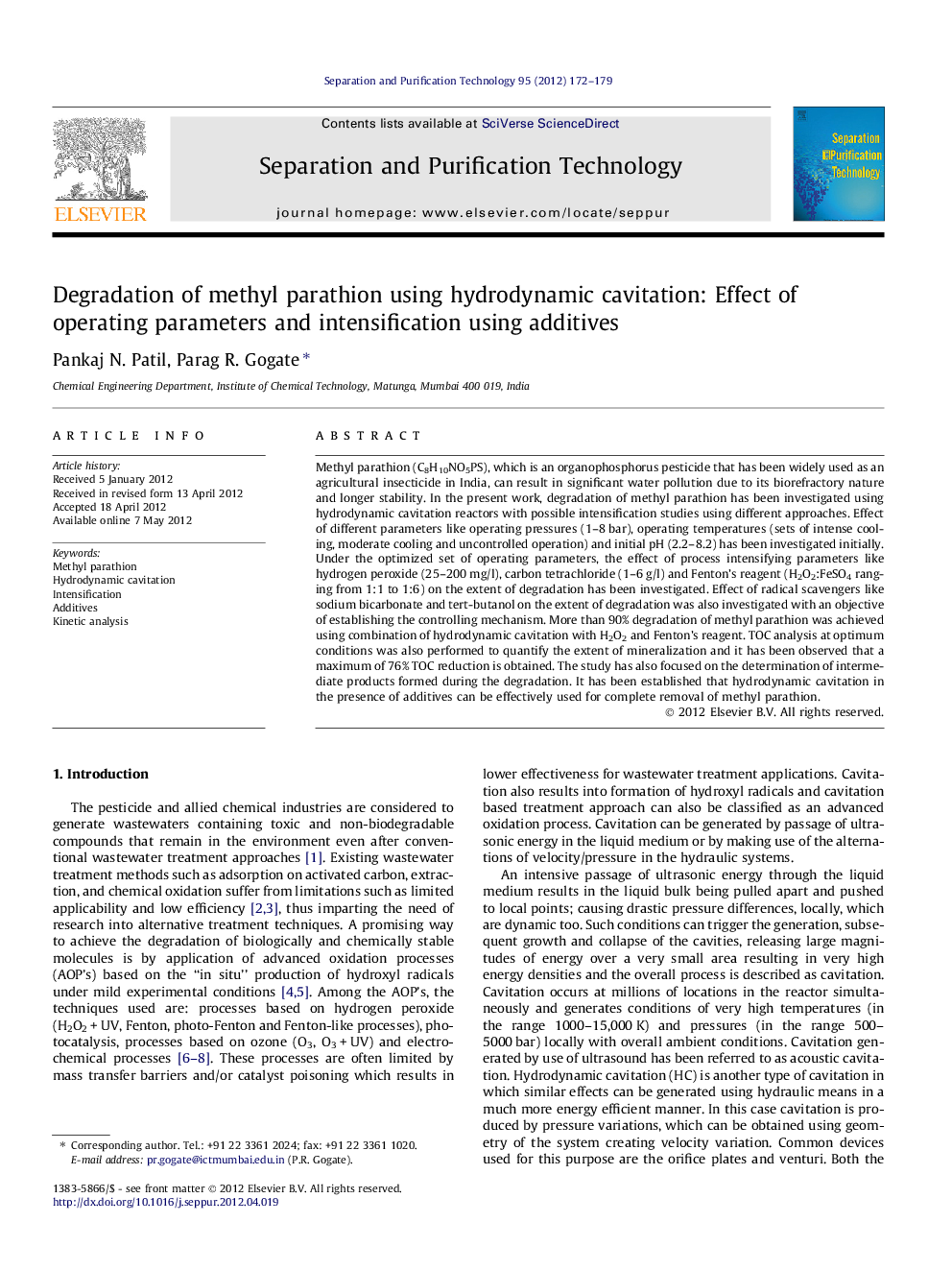| کد مقاله | کد نشریه | سال انتشار | مقاله انگلیسی | نسخه تمام متن |
|---|---|---|---|---|
| 642193 | 1457024 | 2012 | 8 صفحه PDF | دانلود رایگان |

Methyl parathion (C8H10NO5PS), which is an organophosphorus pesticide that has been widely used as an agricultural insecticide in India, can result in significant water pollution due to its biorefractory nature and longer stability. In the present work, degradation of methyl parathion has been investigated using hydrodynamic cavitation reactors with possible intensification studies using different approaches. Effect of different parameters like operating pressures (1–8 bar), operating temperatures (sets of intense cooling, moderate cooling and uncontrolled operation) and initial pH (2.2–8.2) has been investigated initially. Under the optimized set of operating parameters, the effect of process intensifying parameters like hydrogen peroxide (25–200 mg/l), carbon tetrachloride (1–6 g/l) and Fenton’s reagent (H2O2:FeSO4 ranging from 1:1 to 1:6) on the extent of degradation has been investigated. Effect of radical scavengers like sodium bicarbonate and tert-butanol on the extent of degradation was also investigated with an objective of establishing the controlling mechanism. More than 90% degradation of methyl parathion was achieved using combination of hydrodynamic cavitation with H2O2 and Fenton’s reagent. TOC analysis at optimum conditions was also performed to quantify the extent of mineralization and it has been observed that a maximum of 76% TOC reduction is obtained. The study has also focused on the determination of intermediate products formed during the degradation. It has been established that hydrodynamic cavitation in the presence of additives can be effectively used for complete removal of methyl parathion.
► Hydrodynamic cavitation reactors can be effectively applied for the degradation of methyl parathion.
► Combination of hydrodynamic cavitation with Fenton based processes under optimized conditions results in complete removal.
► The controlling mechanism for degradation is the free radical attack.
► Hydrodynamic cavitation is energy efficient way of degrading the pesticide.
Journal: Separation and Purification Technology - Volume 95, 19 July 2012, Pages 172–179